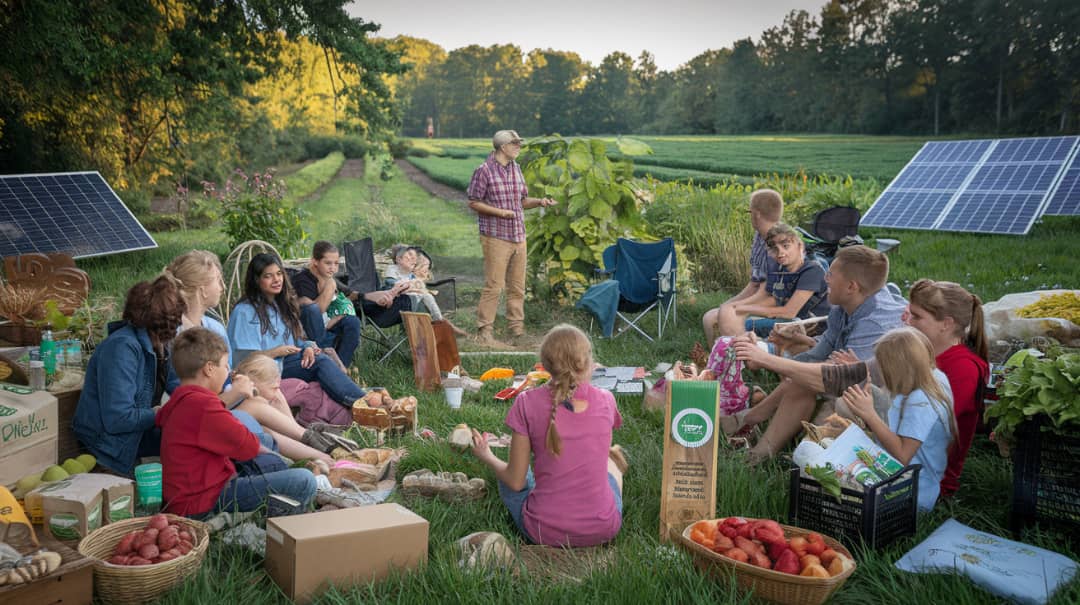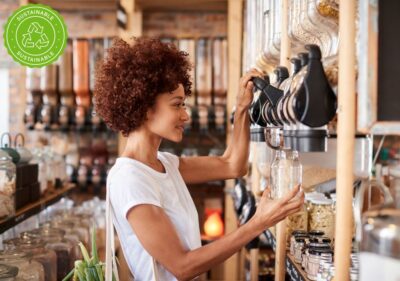
As we move towards a greener, more responsible future, sustainable procurement, aka the Power of Sustainable Buying, is no longer a nice-to-have; it’s a necessity. More and more institutions, from schools in London to large corporations, are making deliberate choices to reduce their carbon footprint while supporting the well-being of their communities. One of the most effective ways to do this is by working with local vendors.
Local procurement is about more than just buying nearby—it’s about fostering economic growth, strengthening communities, and being socially responsible. By supporting local businesses, especially those near you, institutions can directly contribute to sustainable development and improve their overall Environmental and Social Governance (ESG) standing.
In this article, we’ll delve into practical strategies for implementing sustainable procurement with local vendors and how platforms like LocaeRise are making this process simpler and more impactful.
How to Implement Sustainable Local Procurement
Shifting to sustainable procurement practices takes careful planning and a dynamic approach. Here are some strategies that can make the difference:
1. Create a Local Vendor Policy
A good starting point is to establish a clear local vendor policy that prioritizes local businesses. This policy should define vendor selection criteria, ensure vendors meet sustainability standards, and lay out how the organization will support these local suppliers.
By having a structured approach, organizations can more effectively build a procurement system that benefits both the local economy and the environment.
2. Engage with Local Vendors
Sustainable procurement doesn’t happen in a vacuum. Reaching out to local vendors through initiatives like workshops, networking events, or even virtual marketplaces like LocaeRise is essential. Building relationships with vendors and raising awareness about the opportunities sustainable procurement presents can open up new avenues for both parties. LocaeRise’s digital marketplace allows educational institutions, businesses, and local suppliers to connect, making the process of finding sustainable options smoother.
3. Assess Sustainability Throughout the Supply Chain
To ensure long-term success, it’s crucial to regularly evaluate the sustainability performance of your suppliers. This includes looking at their Environmental, Social, and Governance practices.
By conducting these assessments, institutions can identify areas for improvement and work with vendors to develop strategies that align with sustainability goals. LocaeRise helps institutions keep track of vendor performance, ensuring they stay on top of their ESG commitments.

4. Collaborate on Procurement Initiatives
One powerful way to drive sustainability is through collaboration. Partnering with other local organizations can boost purchasing power and amplify the positive impact of procurement efforts.
Whether it’s sharing best practices, pooling resources for joint procurement, or co-developing innovative solutions, collaboration is key. LocaeRise facilitates these partnerships by offering a platform where local businesses, schools, and other institutions can engage and drive change together.
5. Build Vendor Capacity
Not every local business is equipped to meet the sustainability demands of larger institutions right off the bat. Offering support in the form of training, resources, and workshops can help vendors grow and meet those requirements.
LocaeRise offers educational programs, personalized coaching, and access to sustainability experts to help local vendors improve their practices. This kind of capacity building ensures that businesses not only meet current standards but are also prepared for future sustainability challenges.
6. Prioritize Inclusivity in Vendor Selection
A key part of sustainable procurement is ensuring that your supply chain is diverse. Prioritizing minority-owned, women-owned, and small businesses fosters innovation and helps level the playing field. LocaeRise champions this approach by connecting institutions with a broad spectrum of vendors, ensuring that the marketplace is not just sustainable but also inclusive.
This not only supports marginalized communities but also contributes to social justice and economic resilience.
7. Stay Connected with the Community
Sustainability is about more than just buying from local vendors—it’s about understanding the community’s needs and values.
Gathering feedback from stakeholders and keeping the lines of communication open ensures that procurement decisions reflect local priorities.
LocaeRise plays a vital role in connecting institutions with local voices, helping them fine-tune their strategies to better align with community expectations.
8. Continuously Monitor and Evaluate
Sustainability is an ongoing effort. Tracking progress, setting key performance indicators (KPIs), and continuously reviewing vendor relationships are all necessary to ensure your procurement strategies remain effective.
LocaeRise helps by providing tools that allow institutions to track these metrics and make informed decisions that benefit both the local economy and the planet.
Example: Supporting Local Food Systems
One inspiring example of sustainable procurement is the collaboration between hospitals, universities, and local farmers to source fresh, locally grown produce.
This type of partnership benefits everyone—institutions get access to healthy, seasonal foods, local farmers gain new business opportunities, and the community gets stronger as a result.
Platforms like LocaeRise are making these connections possible, allowing schools and hospitals to source local, sustainable goods in a way that benefits both the institution and the vendor. Locally grown produce also tends to be fresher and more environmentally friendly, reducing the need for long transportation routes and promoting regional agricultural heritage.
Addressing the Challenges
While the benefits of sustainable procurement are clear, there are some challenges that organizations might face along the way:
- Higher Initial Costs: While sustainable products can have higher upfront costs, they often result in long-term savings. From reducing energy consumption to lowering waste disposal fees, sustainable procurement is an investment that pays off over time.
- Vendor Capacity: Not all local vendors are equipped to handle large orders from institutions. However, this challenge also presents an opportunity for growth. With the right support, local vendors can scale their operations and meet the demands of larger clients. Platforms like LocaeRise help bridge this gap by offering training and capacity-building resources.
- Balancing Priorities: Sustainable procurement involves juggling environmental, social, and economic goals. Finding the right balance between these priorities can be tricky, but it’s essential for long-term success. Working with platforms like LocaeRise, which prioritize these values, can make this process easier and more streamlined.
Conclusion: Take Action and Join the Movement
Sustainable procurement is about more than just reducing environmental impact. It’s about empowering local businesses, fostering inclusive growth, and building a future that benefits everyone.
By implementing these strategies and working with platforms like LocaeRise, institutions can create a procurement process that drives positive change for their communities and beyond.
It’s time to take action. Whether you’re a school, a business, or a local government entity, embracing sustainable procurement practices can transform not just your organization, but the world around you.
Explore LocaeRise’s marketplace today, and discover how you can make a difference by supporting local vendors and building a more sustainable future.


